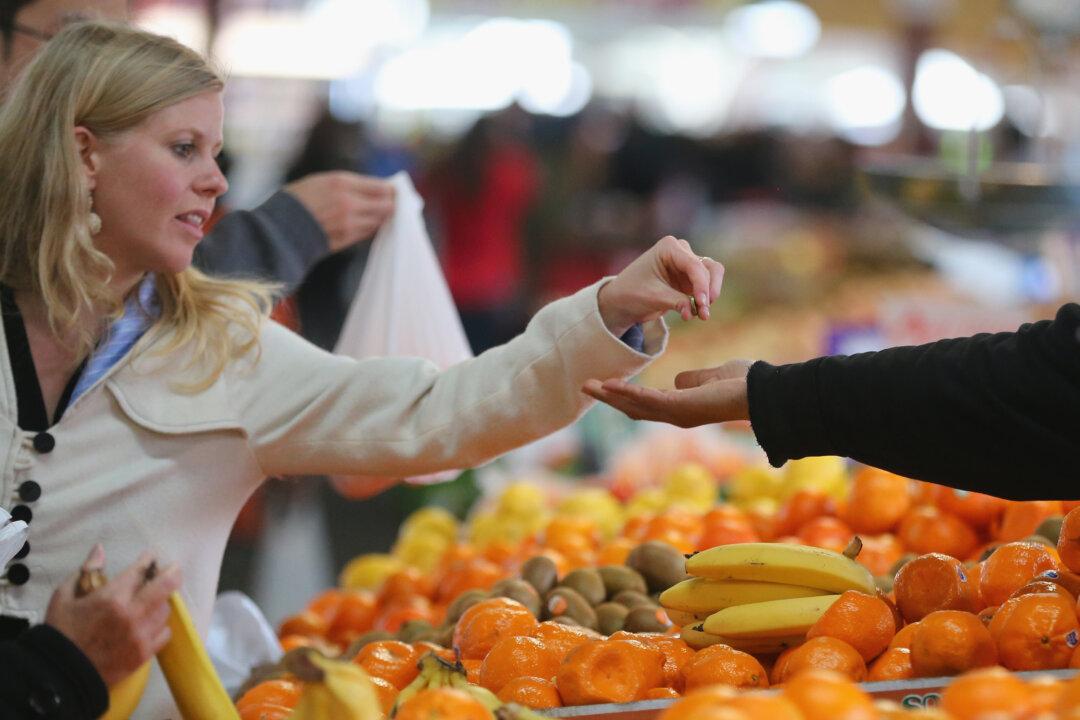
A woman pays a fruit vendor in a market in Melbourne, Australia, on July 23, 2013. Scott Barbour/Getty Images
About 80 percent of Australian households are under “extreme” financial stress, according to a new report.
In November, Finder’s Cost of Living Pressure Gauge reached an “extreme” level of 79 percent, up from 45 percent in November 2020.
